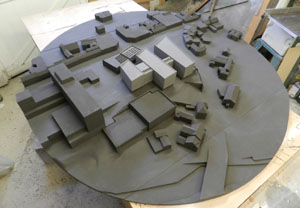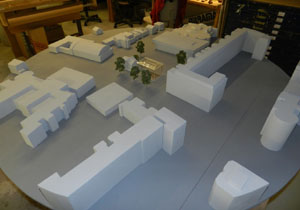Two models for R&D wind tunnel testing – scale 1:150


Over the years we’ve created many models specifically for use in wind tunnel tests to measure various performance criteria of proposed new designs. These two models, both at 1:150 scale, have a 1.8m diameter and are designed to fit on a circular rotating bed within the wind tunnel chamber. They were recently delivered to the R&D department at a local university where various tests will be conducted. The project with the clear acrylic building in the middle will be used to measure natural ventilation performance and will have pressure taps fixed at key points within the building envelope. The darker model is for a different development and will be used to measure pedestrian discomfort levels at varying wind conditions. This is done by filming the disruption patterns of fine white powders around the buildings under different wind speeds and directions. The model is dark so that the powder shows up against the background. The enlarged image shows the upper part of the buildings removed.